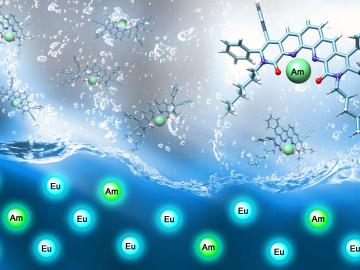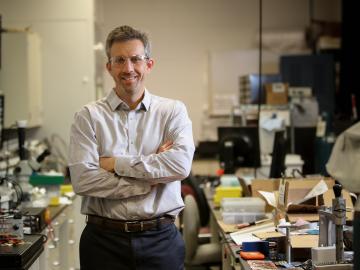
Filter News
Area of Research
- (-) Clean Energy (187)
- (-) Materials (136)
- Advanced Manufacturing (5)
- Biological Systems (1)
- Biology and Environment (103)
- Biology and Soft Matter (4)
- Building Technologies (2)
- Chemical and Engineering Materials (3)
- Chemistry and Physics at Interfaces (7)
- Climate and Environmental Systems (7)
- Computational Biology (1)
- Computational Chemistry (5)
- Computational Engineering (1)
- Computer Science (3)
- Data (1)
- Earth Sciences (1)
- Electricity and Smart Grid (1)
- Energy Frontier Research Centers (7)
- Fuel Cycle Science and Technology (2)
- Functional Materials for Energy (8)
- Fusion and Fission (33)
- Fusion Energy (7)
- Geographic Information Science and Technology (1)
- Isotope Development and Production (1)
- Isotopes (22)
- Materials for Computing (13)
- Materials Synthesis from Atoms to Systems (8)
- Materials Under Extremes (7)
- National Security (46)
- Neutron Data Analysis and Visualization (2)
- Neutron Science (74)
- Nuclear Science and Technology (29)
- Quantum Condensed Matter (3)
- Quantum information Science (4)
- Renewable Energy (2)
- Sensors and Controls (2)
- Supercomputing (155)
- Transportation Systems (4)
News Type
News Topics
- 3-D Printing/Advanced Manufacturing (28)
- Advanced Reactors (3)
- Artificial Intelligence (5)
- Big Data (3)
- Bioenergy (11)
- Biology (4)
- Biomedical (4)
- Biotechnology (1)
- Buildings (14)
- Chemical Sciences (9)
- Clean Water (5)
- Climate Change (8)
- Composites (3)
- Computer Science (13)
- Coronavirus (7)
- Critical Materials (1)
- Cybersecurity (6)
- Decarbonization (18)
- Energy Storage (27)
- Environment (25)
- Exascale Computing (1)
- Fossil Energy (1)
- Fusion (3)
- Grid (15)
- High-Performance Computing (3)
- Isotopes (6)
- Machine Learning (2)
- Materials (25)
- Materials Science (26)
- Mathematics (2)
- Mercury (1)
- Microelectronics (1)
- Microscopy (10)
- Nanotechnology (11)
- National Security (1)
- Net Zero (1)
- Neutron Science (13)
- Nuclear Energy (12)
- Partnerships (5)
- Physics (13)
- Polymers (5)
- Quantum Computing (1)
- Quantum Science (1)
- Security (4)
- Simulation (1)
- Space Exploration (2)
- Summit (3)
- Sustainable Energy (17)
- Transformational Challenge Reactor (2)
- Transportation (23)
Media Contacts


“Made in the USA.” That can now be said of the radioactive isotope molybdenum-99 (Mo-99), last made in the United States in the late 1980s. Its short-lived decay product, technetium-99m (Tc-99m), is the most widely used radioisotope in medical diagnostic imaging. Tc-99m is best known ...
For the past six years, some 140 scientists from five institutions have traveled to the Arctic Circle and beyond to gather field data as part of the Department of Energy-sponsored NGEE Arctic project. This article gives insight into how scientists gather the measurements that inform t...

Christina Forrester’s meticulous nature is a plus for her work leading technical testing and analysis of radiological and nuclear detection devices, whether that work takes her to the Desert Southwest or to her own lab outfitted with specialized



Leveraging his expertise in image processing, sensors, and machine learning, Vincent Paquit is devising a control system for additive manufacturing to produce 3D-printed parts that function as well as conventionally produced objects. Paquit’s research sits at the junction of manufacturing technol...

Last November a team of students and educators from Robertsville Middle School in Oak Ridge and scientists from Oak Ridge National Laboratory submitted a proposal to NASA for their Cube Satellite Launch Initiative in hopes of sending a student-designed nanosatellite named RamSat into...

Researchers are looking to neutrons for new ways to save fuel during the operation of filters that clean the soot, or carbon and ash-based particulate matter, emitted by vehicles. A team of researchers from the Energy and Transportation Science Division at the Department of En...

Yarom Polsky’s diverse background in private and public-sector research has given him a knack for recognizing opportunities to advance the state-of-the-art, and he parlays that knowledge into successful innovation as an engineer, group leader, and


